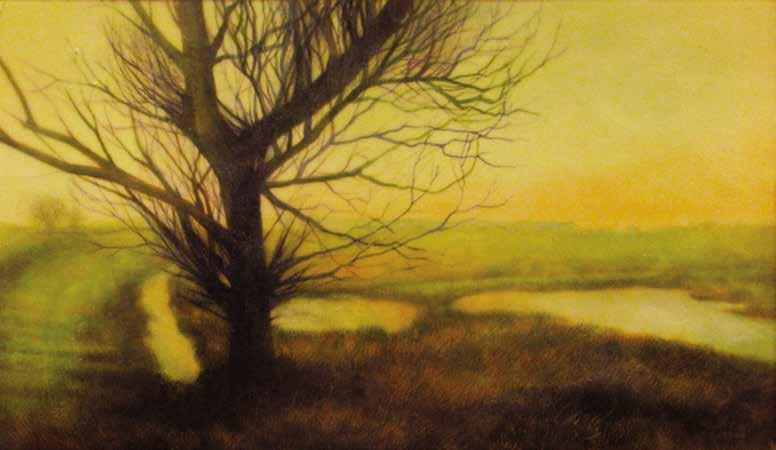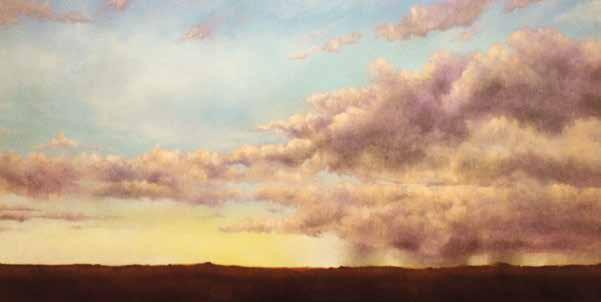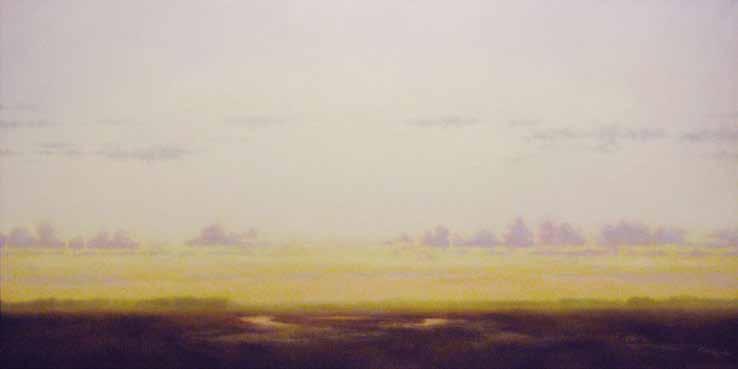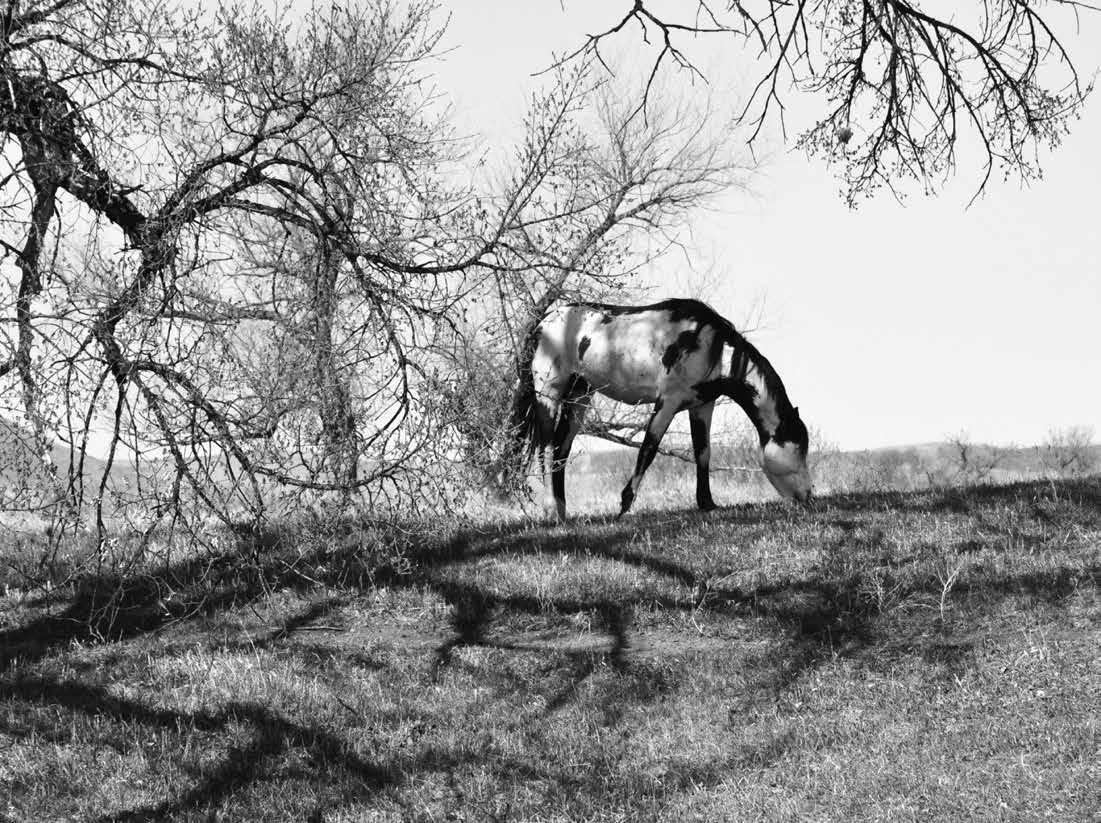
13 minute read
Breaking Grounds
By Rachel Brazil
The directions we take in life are not always clear. Often a simple turn in our journey’s path can fill us with tension and uncertainty. Three years ago, I led my family down a new road, taking a turn towards a new path. We did not know what to expect, but we knew it was worth a try. We moved to North Dakota. Neither my husband nor I were raised here. We had no family here. Our ancestors did not till the soil or hunt the bison of the prairie. We knew no one.
Advertisement
I had just finished my master’s degree and we had two young children. As we sought out a place to live and work we did so with one thing in mind: to make a home in which to raise our family. When I was offered a position at a tribal college in North Dakota, we took a trip to visit the area. As we drove through New Rockford, the conversation went something like this: “It looks like there’s good hunting and fishing.” “There’s a grocery store.” “And a bakery.” “A nice park—” “With a swimming pool!” “The people are friendly, they smile when they wave.” “There’s a movie theatre.” “And a coffee shop.” “And an Opera House?” “Really…” It felt like a place that we could call home. I accepted the position, we bought our first house together, made the move, and began settling in.
Exploring our new town, I sensed the layers of time that signified the growth and changes that had come through the years. The architecture of the downtown buildings told a story of settlement and growth in the early 1900s. Some of the buildings have been reoccupied, restored to a youthful vibrancy. Others remain vacant and aging, holding on to the mysteries of times gone by. Old trucks and farm implements become part of the landscape, speaking to the growth the nation experienced in the 1950s. The pastel rainbow colors decorating the community swimming pool teased out pieces of my childhood and made me feel as though I were re-experiencing the early 1980s.
The neighborhood coffee shop offered espressos, lattes, smoothies, chai, and wireless connectivity. This reassured us we were indeed still in the twenty-first century. Yet, I found myself stunned in disbelief when I could not use my debit card at the bakery. When I came to my senses enough to tell the owner I had no cash or checks she kindly replied, “That’s okay. Your husband can pay for it the next time he comes in.” It took me a few moments to realize that her words must mean that she knew who my husband was, and knew me too. This exchange was my first true welcome to small-town living.
I suspect the process in which my sense of place transformed this small town into my home differs from those experiencing a homecoming. I meet others who have returned. They share stories of leaving their home for college or careers and find themselves now returning to take over a family farmstead, care for an aging parent, or raise their own family. I imagine that in such cases the landscape conveys memories that lend to story. These memories allow not only the creation of oneself, but the opportunity to share oneself, and by extension lend to the transformation of spaces into places. With each road I travel or introduction I make, I lack the deep memories of my childhood or the knowledge of the stories of this particular place. For me, the landscape stirs memories of places geographically distant, but yet close to my heart.
I spent my childhood in the rural landscapes of Illinois farming towns and came of age on the edges of upper middle-class suburbia. I became acquainted with industrial ruin as well as the scenic and cultural attractions of metropolitan life. Somehow, I was never entirely comfortable in this landscape. I was easily overwhelmed by the demands of suburban materialism as well as the dangers of wandering into the wrong neighborhoods at night. When the time came, I opted to go away for college. I moved further from the urban tempo of life and closer to the rural pace of forested bluffs and bottomlands of the southern Midwest.
Through my undergraduate years, I escaped the humid summers to work in a small resort community in the mountains of Colorado. After meeting the man I would marry, I continued my education in the high plains of Wyoming. Together we returned to live in the Midwest. While I was far from the lands of childhood, bits of this new landscape began to speak to me.
As I walked through the residential alleys, the backyard vegetable gardens were reminiscent of the one I tended with my grandparents years ago. Leafy rhubarb, mammoth dill, and luscious tomatoes each awaited their imminent transformations into culinary delights. The neighbor’s apple tree gave me the delightful opportunity to make homemade applesauce for my children, all the while remembering the same smells that filled my grandparents’ home. Each trip to the park stirred recollections of childhood play as my boys raced toward the merry-go-round. After a few spins, we would rest on the platform together and I would be moved by the date of 1951 imprinted on the center, realizing that merry-go-rounds were not only my favorite but a favorite of my father’s as well. Such scenes began to unfold as part of my daily life. The memories and realizations began to take hold and told me one thing: I was in a safe and comforting place. This experience of place reminded me not only of who I am, but also of what my soul craves. It left me grateful that through my many turns in life, I continued to listen to the desires of my heart.
As I spent those initial months finding comfort in my new surroundings, I had no idea that soon my soul would be in desperate need of these small comforts and beloved memories of childhood. I found myself overwhelmed by my professional responsibilities. My new position called for me to develop and teach a curriculum in natural resource management, an opportunity I was excited for. However, as I ventured out to the prairies and wetlands, I realized how little I knew of the region. I was familiar with the flora of the temperate deciduous forests of the southern Midwest and the subalpine regions of the Rocky Mountains, but not necessarily the prairies of North Dakota. I questioned my own ability and knowledge of the natural world. I criticized myself for not knowing the diversity of grasses or the species of birds and did not give myself the joy of learning through exploration. I was holding on too tightly to the demands of my position, allowing stress to overwhelm my experiences. Instead of hunting waterfowl with my husband, I obsessed about content for my Tuesday class on Wildlife Identification. Without being mindful and appreciative of the world around me, I could not understand what it had to say.
Autumn turned into winter and I was prepared for wind chills and heavy snowfall. I owned fleece-lined Carhartts and kept a winter survival kit in my car. I learned to embrace the chance that a daytime high might reach twenty degrees Fahrenheit. But by my second North Dakota winter, I was beginning to feel the toll of constant sub-zero temperatures. Even more, I was feeling the toll of a twenty-seven-mile commute each morning and afternoon. I was feeling the burden of wearing so many different hats each day and trying to still have the energy to come home and enjoy my family. I was aching, not just for spring, but also for some kind of relief.
I had become intensely lonely, without time or energy to make friends in my town; I relied heavily on my husband for support. One evening after having a particularly difficult day at work and home, I felt the need to talk to someone about how uncomfortable and unbalanced my responsibilities had become. I turned to one of my greatest teachers—my father. He had a way of understanding without imposing expectations. He understood how far I had come academically, professionally, and personally. He also understood how overwhelming the compulsive need to do everything perfect and right could be. He and I were very much alike. That night, I explained how much I wanted to enjoy my life, each and every day. He listened intently and shared some frustrations with his own pace of life.
He had retired four months earlier and was working through the last of his chiropractic training. He held on to what life would have to offer when he could slow down enough to enjoy life again. When he told me good-bye, he spoke two more words, “Be happy!” Tears caught in my throat as I tried not to cry. It felt like such a tall order.
Those words stuck with me. They were the last words my father spoke to me. Less than a week later, at the age of fifty-five, he suffered sudden cardiac arrest. My world was turned inside out. Nothing was what it seemed. He was physically healthy one moment, and gone the next. No time for good-bye or I love you. I traveled back to my childhood home for the funeral and realized home would never be the same. In time, it would be up to me to recreate what my home and my happiness would be.
Choosing happiness was no easy task. In the depth of winter, I returned to New Rockford to continue on with life and grieve the loss of my father. In addition to trying to continue the stresses of my job and care for my family, I had a whole new load of work to juggle. My father’s passing was a complete surprise to everyone. So many loose ends needed to be gathered up and followed through on. As the eldest in my family, I had a certain amount of expertise when it came to documents and processes. My brother, sister, and I had to make decisions that we were not at all prepared to do. We still felt like children. Each of us was our own mess of sorts. While I needed to work through the grief and pain, more than anything I needed to learn to relax. I had to learn to be content with the moment and content with myself.
There may be no better place to learn contentment than in a small town. Through my grief and renewal, the land helped me heal. As the days, weeks, and months passed, the snow melted, the birds returned, and the trees began to bud again. The landscape began to help ease my pain. But the challenges I had before remained. In fact, they had intensified and grew until I made a difficult decision. I stepped away from the stresses of my job and began to focus on my health, my family, and my home.
I made the decision to become self-employed, but planned to take a few months of recovery time first. Each morning I found solace in the early light as I wrote in my journal. Taking this time helped me to take baby steps towards emotional and spiritual renewal. I had to learn to breathe again. I had to find my balance again. I had to care for my soul again. I had to find my path again.
Each afternoon, I worked in the garden, harvesting tomatoes, cucumbers, eggplants, and squash. Sometimes my sons were at my side working with me. At other times, they laughed and played in their fort and on their swings. The ability to be in that moment helped give me a sense of purpose.
In the evenings, my husband and I would sit and talk outside. As we discussed the changes that had come about in our life, we would hear the soft coos of mourning doves and feel the warm evening air. We trusted that we were exactly where we needed to be. These moments were what got me through the fear, sadness, and pain, giving me hope that someday I would be able to smile with acceptance.
As the space around me transformed into a place of peace, my own acceptance grew and my perspective changed. In time, I no longer needed to prove myself or justify my actions. My guard came down and I began to take risks in sharing my true self with others. It was a risk; I feared rejections, judgments, and imposed limitations. But living in a small town has its benefits. People tend to know more than one might think and their understanding and acceptance is profound.
Finally, I got brave enough to share some of the things that were nearest and dearest to my heart. I made up batches of yellow tomato jam, apple butter, and jalapeño jelly. I harvested fresh herbs and sunflowers, then wrapped them and priced them. I went to the Sheyenne Farmers Market to sell my goods as a vendor. This was my first step in sharing myself. The warm welcome I received from the other vendors and customers helped my confidence grow. I learned that in order to heal, I needed to cultivate my talents.
I returned to my love of the arts, a passion that had been usurped by academics long ago. I began revisiting my old artworks, shooting with my camera again, and sharing my interests with others. I made a visit to the local office for economic development and shared my interests, skills, and story with the executive director. I was hoping to find flexible ways to begin generating some income that would still allow me to develop myself freely as an artist, writer, and skilled professional. To my surprise and delight, I found something more. This meeting became the beginning of two wonderful friendships. Both the executive director and assistant director had their own artistic aspirations and encouraged me to pursue my interests.
I began writing a blog at pagesofparadigm.com to document the challenges in redefining success and learning to live in the moment. Suddenly the peaceful moments and open acceptance of small-town living not only transformed into insightful written prose, but also allowed me to identify what it was my soul needed. Embracing and expressing my inner source of creativity gave me the opportunity to redefine myself in a way that I was truly comfortable with. I became comfortable sharing myself with others and being myself around people I didn’t know. I began working with the Dakota Prairie Regional Center for the Arts to integrate visual arts into the programming and in April opened Upstage Gallery. I became comfortable sharing my interests in nature, writing, drawing, and photography. I continue to write and post photographs on my blog; I also consign artwork at Upstage Gallery, and will be teaching a creative writing class as part of a youth arts program.
This is where I am now, and the process continues. I am becoming comfortable sharing my knowledge and skills to contribute to economic development, education, and small-scale agriculture in the place that had nurtured me back to life. I offer professional services in grant writing and project development. I am part of an effort to enhance the community garden and establish a farmers market. I still grow my garden and look forward to the harvest again this year. The path I have journeyed led to me to a sense of belonging. I have learned to live, reach out to others, become part of a community, and ultimately contribute to my own sense of place. I feel nourished, encouraged, and supported by the atmosphere that surrounds me, by the distinct shape of the roads I travel every day, and by the radiance that emerges every from each turn I take.
Rachel Brazil holds an interdisciplinary master’s degree from the University of Wyoming in American Studies and Environment & Natural Resources. She is an independent artist, writer, and project consultant living in New Rockford, North Dakota. She enjoys reading, gardening, and exploring North Dakota with her husband and two young boys.










